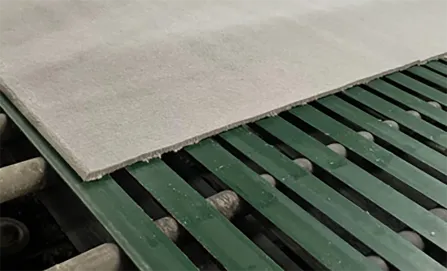- Afrikaans
- Albanian
- Amharic
- Arabic
- Armenian
- Azerbaijani
- Basque
- Belarusian
- Bengali
- Bosnian
- Bulgarian
- Catalan
- Cebuano
- Corsican
- Croatian
- Czech
- Danish
- Dutch
- English
- Esperanto
- Estonian
- French
- German
- Greek
- Hindi
- Indonesian
- irish
- Italian
- Japanese
- Korean
- Lao
- Malay
- Myanmar
- Norwegian
- Norwegian
- Polish
- Portuguese
- Romanian
- Russian
- Serbian
- Spanish
- Swedish
- Thai
- Turkish
- Ukrainian
- Uzbek
- Vietnamese
дец . 10, 2024 11:48 Back to list
ceiling grid hanger wire
Understanding Ceiling Grid Hanger Wire A Comprehensive Guide
When it comes to suspended ceilings or drop ceilings, the right tools and materials play a crucial role in ensuring a stable, visually appealing, and functional installation. Among these materials, ceiling grid hanger wire stands out as a key component that supports the entire framework of the ceiling grid. This article delves into the importance, types, and installation of ceiling grid hanger wire, equipping you with essential knowledge for your next ceiling project.
What is Ceiling Grid Hanger Wire?
Ceiling grid hanger wire is a type of wire specifically designed to support the metal framework that holds up ceiling tiles. Typically made from high-strength steel, this wire is known for its excellent tensile strength and durability, making it ideal for holding heavy loads securely. Its primary function is to suspend the grid system from the building’s ceiling joists, ensuring that the tiles remain level and secure.
Importance of Ceiling Grid Hanger Wire
The proper installation of ceiling grid hanger wire is critical for several reasons
1. Support and Stability The hanger wire provides essential support for the grid system. A well-installed wire will prevent sagging, warping, or shifting of the ceiling tiles, leading to a more professional appearance.
2. Load-Bearing Capacity Different types of ceiling tiles may vary in weight. Hanger wire must be chosen and installed correctly to accommodate the specific load requirements of the tiles being used.
3. Ease of Installation Using the right hanger wire can simplify the installation process. Properly configured wires make it easier to achieve a level ceiling, which is especially important for aesthetic reasons.
4. Code Compliance In many locales, building codes specify particular standards for ceiling installations. Using the recommended hanger wire can help ensure compliance with safety regulations.
Types of Ceiling Grid Hanger Wire
Ceiling grid hanger wire comes in various types and sizes to accommodate different installation needs
1. Galvanized Steel Wire This is the most common type of hanger wire due to its resistance to rust and corrosion. It is suitable for most indoor environments.
ceiling grid hanger wire

2. Stainless Steel Wire For areas with high humidity or where aesthetics matter (like in restaurants or galleries), stainless steel wire is preferred for its durability and sleek appearance.
3. Pre-cut Lengths Hanger wires are available in pre-cut lengths, typically between 10 to 12 feet, making them easier to handle and install.
4. Adjustable Wires Some systems feature adjustable hanger wires designed for quick modification in height during installation or adjustment stages.
Installation of Ceiling Grid Hanger Wire
Installing ceiling grid hanger wire requires careful planning and execution. Here is a basic overview of the steps involved
1. Planning the Layout Before installation, plan your grid layout carefully. Mark the locations where the hanger wires will be attached to the ceiling.
2. Cutting the Wire If you are using longer lengths of wire, cut them to the desired length using wire cutters. Ensure that you have enough wire for the number of supports recommended by your ceiling grid manufacturer.
3. Attaching the Wire Secure the hanger wire to the ceiling joists using specific fasteners designed for your ceiling type. Be sure to follow local codes and guidelines about the number and placement of wires.
4. Connecting to the Grid Once the wires are secured to the ceiling, attach them to the grid framework using appropriate clips or other connecting hardware. Ensure that each wire is tensioned properly to maintain a level ceiling.
5. Final Checks After all connections are made, step back and visually inspect the grid. Make adjustments as necessary to achieve a flat and level appearance.
Conclusion
Ceiling grid hanger wire is a critical element in the installation of drop ceilings, providing the support and stability necessary for a successful project. Understanding its importance, types, and installation process can dramatically enhance the quality of your ceiling projects. Whether you are a DIY enthusiast or a professional installer, paying attention to this often-overlooked detail will ensure a sturdy and aesthetically pleasing ceiling installation.
-
Transform Interiors with PVC Gypsum Ceiling: A Stylish, Durable, and Moisture-Resistant SolutionNewsMay.19,2025
-
The Smart Interior Upgrade: Discover the Durability and Versatility of Gypsum Ceiling Access Panel SolutionsNewsMay.19,2025
-
The Smart Choice for Interior Design: Discover the Value of PVC Gypsum Ceiling SolutionsNewsMay.19,2025
-
Mineral Fiber Ceiling Tiles: The Smart Blend of Performance and AestheticsNewsMay.19,2025
-
Mineral Fiber Ceiling Tiles: The Superior Choice Over Gypsum for Sound and Fire SafetyNewsMay.19,2025
-
Mineral Fiber Ceiling Tiles: Eco-Friendly Strength and Style for Every CeilingNewsMay.19,2025







